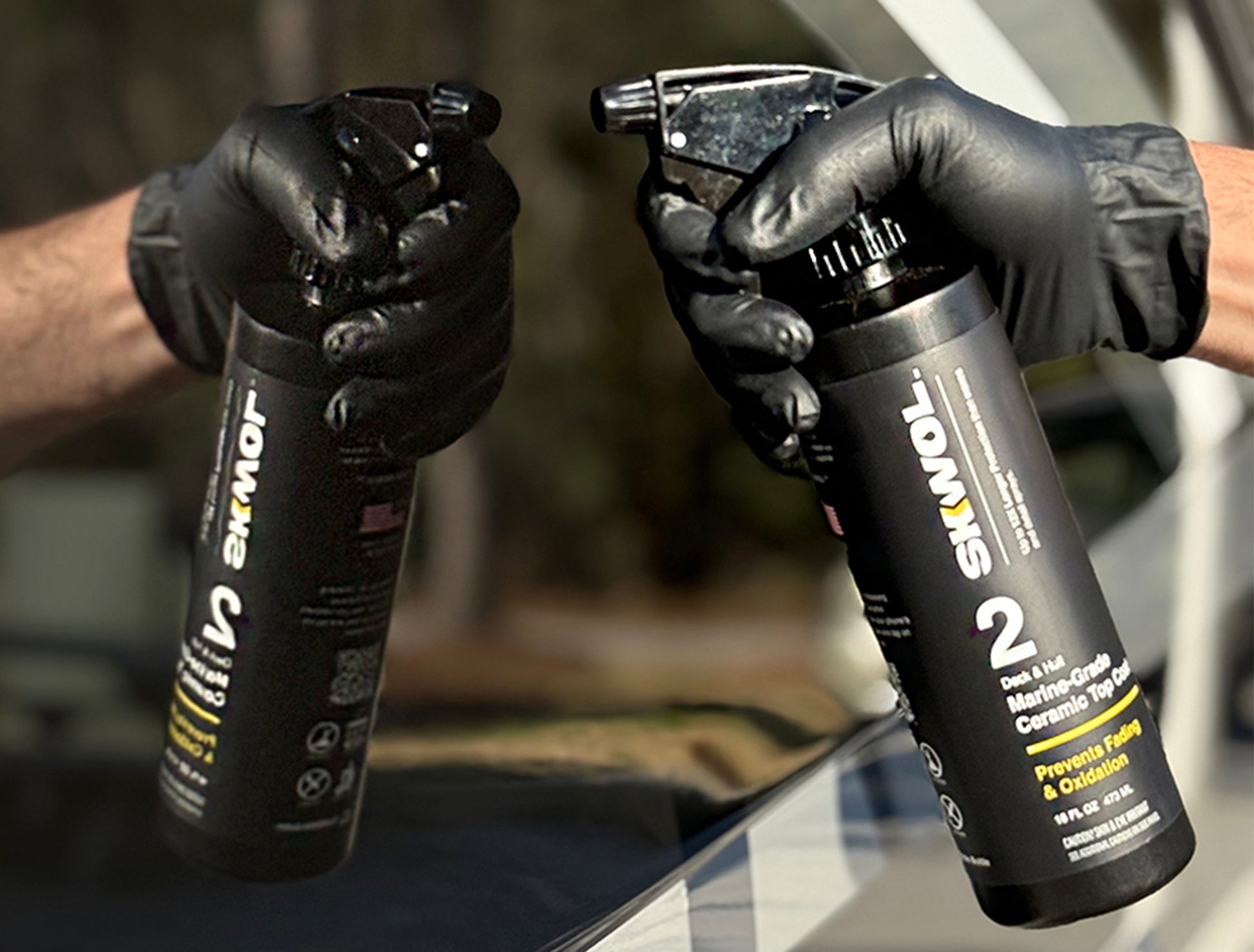In the world of marine detailing, new technologies come with a wave of hype. One of the latest? Graphene spray coatings. Touted as the next evolution after ceramic sprays, they promise superior shine, longer-lasting protection, and cutting-edge science. But do they really live up to the claims—especially when it comes to protecting your boat? Let's break it down.
1. Most "Graphene" Sprays Don’t Contain Real Graphene
The term "graphene" sounds impressive, but many marine-grade graphene sprays on the market don’t actually contain pure graphene. Instead, they rely on graphene oxide:
-
Graphene oxide is easier to work with in water-based formulas.
-
It lacks the extreme hardness, conductivity, and strength of pure graphene.
-
In most cases, it's used in trace amounts—just enough to label the product as "graphene-infused."
Bottom line: For boaters, the term "graphene" is often more marketing than meaningful performance.
2. Spray Coatings Are Limited by Format, Not Chemistry
Regardless of whether a spray is labeled "ceramic" or "graphene," the spray format itself comes with some fair limitations:
-
Sprays are scientifically diluted for ease of application.
-
They apply in thinner layers than professional-grade resin-based application, which makes them much more forgiving, while they maintain around 50-60% of the lifespan (which is fantastic for DIY application and only means they will need to be applied at least 2X a year vs. once a year) NOTE: Anything that promises multi years in the marine industry is likely misleading due to the scientific limitations of chemicals versus marine environments.)
-
Most spray coatings offer short-term results (typically 3–6 months), while some, albeit few - including SKWOL Deck & Hull Marine-Grade Ceramic Top Coat, may offer up to 12 months depending on boat storage, location and maintenance.
For long-lasting marine protection, professional-grade solvent-based coatings (which bond deeper and last longer) remain superior, but come with high cost and are notoriously unforgiving. When user error takes place, they must be stripped, removed and reapplied which can be a lengthy and expensive process.
3. Real Protection Comes from What Are Known as "Binders"
In both ceramic and graphene sprays, the true protective power comes from binders such as:
-
Silanes
-
Siloxanes
-
Polysilazanes
These are the ingredients that create hydrophobic surfaces, UV resistance, and chemical durability. If the base formulation is solid, a ceramic spray can offer equal or better performance than a poorly formulated graphene spray.
4. Thermal Conductivity and Strength of (Real) Graphene? Not in Spray Form.
Graphene’s superstar traits—incredible strength, heat dissipation, and conductivity—sound great. But these only apply when graphene is used in proper concentrations and structured coatings.
-
Spray-on coatings are too thin to benefit from these features.
-
Most water-based graphene sprays won’t offer any real structural advantage for your boat's finish.
In other words: It’s mostly science fiction in spray format.
The Bottom Line
Graphene sprays aren’t inherently better than ceramic sprays—they’re just different. For boat owners looking for easy protection and shine, a well-formulated ceramic spray is often just as effective, if not better. Instead of chasing buzzwords, focus on:
-
Quality of the base formula
-
Reputable marine brands
-
Real-world results on gelcoat and fiberglass
Because in the end, it’s not about what's trendy—it’s about what keeps your boat protected and looking great out on the water.



Share:
Polish vs Ceramic Coating - What's the difference?
Ceramic Spray Coatings vs Traditional Wax: What’s Best for Long-Term Boat Protection?